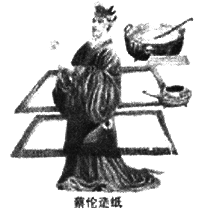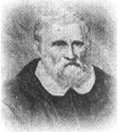网址:http://m.1010jiajiao.com/timu3_id_2364829[举报]
| |||||||||||||||||||||||||||||||||||||||||||||||||||||||||||||||||||||||||
In the 13th century
(世纪),the famous Italian traveller, Marco Polo, travelled a long way to China. During he stay in China, he saw many wonderful things. One of the things he discovered was that the Chinese used paper money. In western countries, people did not use paper money until the 15th century. However, people in China began to use paper money in the 7th century.
A Chinese man called Cai Lun invented paper almost 2 000 years ago. He made it from wood. He took the wood from trees and made it into paper. He then put these pieces of paper together and made them into a book.
Now paper still comes from trees. We use a lot of paper every day. If we keep on wasting so much paper, there will not be any trees left on the earth. If there are no trees, there will be no paper. Every day, people throw away about 2 800 tons
(吨)of paper in our city. It takes 17 trees to make one ton of paper. This means that we are cutting nearly 48 000 trees every day. Since it takes more than 10 years a tree to grow, we must start using less paper now. If we don't, we will not have enough time to grow more trees to take the place of those we use for paper.
So how can we save paper? We can use both sides of every piece of paper, especially when we are making notes. We can choose drinks in bottles instead of those in paper packets. We can also use cotton handkerchiefs
(手帕)and not paper ones. When we go shopping, we can use fewer paper bags. If the shop assistant does give us a paper bag, we can save it and reuse it later.Everyone can help to save paper. If we all think carefully, we can help protect trees. But we should do it now, before it is too late.
根据文章内容选择 (1)When he was in China, Marco Polo ________.[ ]
A
.discovered Cai Lun invented paperB
.learned to make paperC
.saw many wonderful thingsD
.read a lot of books(2)People in western countries first used paper money in the ________ century.
[ ]
|
A .17th |
B .15th |
C .13th |
D .7th |
(3)About ________ tons of paper are thrown away every day in our city.
[ ]
|
A .1 700 |
B .2 000 |
C .2 800 |
D .48 000 |
(4)Which of the following is NOT the way of saving paper?
[ ]
A.To use both sides of every piece of paper.
B.To use the paper bags from shops not more than once.
C.To use cotton handkerchiefs instead of paper ones.
D.To grow more trees.
(5)Which of the following is NOT TRUE?
[ ]
A.If we keep on wasting paper, we will have no paper to use.
B.The Chinese used paper money much earlier than the people in western countries.
C.About 48 000 trees can be used to make 2 800 tons of paper.
D.it is never too late to plant trees for paper.
(6)Which is the best title(题目)of the passage?
[ ]
A.Saving Paper
B.The History of Paper
C.Cotton Handkerchiefs Back Again
D.Cai Lun, the Great Inventor
查看习题详情和答案>>Nearly two days after its launch, the unmanned spacecraft Shenzhou VIII docked with the space lab module Tiangong I more than 343 km above the earth surface. Shenzhou VIII and Tiangong I took apart after flying together for 12 days. On the 14th of November, the two spacecrafts finished the second docking. Then Shenzhou VIII parted from Tiangong I again and returned to the earth safely on the 17th. Tiangong I is still traveling around the earth in the space, waiting for the arrival of Shenzhou IX and X and so on in the near future.
That marked another great leap for China’s space program and made China the third country in the world, after the United States and Russia, to master the space docking technique (空间对接技术).
The world’s first space docking was achieved in 1966, when the manned U.S, spacecraft Gemini 8 (双子星8号) docked with an unmanned Agena Target Vehicle (阿金纳目标飞行器). Space docking is necessary to explore space beyond Earth’s orbit. “The capability increases China’s ability to act independently in space, as well as its ability to work together with others,” said Gregory Kulacki, a U.S. space scientist and senior analyst.
“With the success of its first space docking, China is now equipped with the basic technology and ability required for the construction of a space station,” said Zhou Jianping, chief designer of China’s manned space program.” The country is on its way to building a permanent manned space station around 2020.”
小题1:What did the success of the first space docking mean to China?
| A.China has caught up with the United States in the space exploration field. |
| B.China took a step closer to building its own space station. |
| C.China became the first country to master the space docking technique. |
| D.China has the ability to build a permanent manned space station right now. |
| A.Shenzhou VIII. |
| B.Tiangong I |
| C.The Space Station |
| D.The success of China’s first space docking |
| A.Tiangong I will fly in the space for 12 days. |
| B.The first space docking of the world was achieved in 1966, by Russians. |
| C.Without space docking technique people can’t explore space beyond Earth’s orbit. |
| D.The U.S.A helped China achieve the first space docking. |
| A.The first space docking of China. |
| B.The history of space docking. |
| C.The first space docking of the world. |
| D.The space docking technique |
| |||||||||||||||||||||||||||||||||
A Chinese man called Cai Lun invented paper almost 2,000 years ago. He made it from wood. He took the wood from trees and made it into paper. He then put these pieces of paper together and made them into a book.
Now paper still comes from trees. We use a lot of paper every day. If we keep on wasting so much paper, there will not be any trees left on the earth. If there are no trees, there will be no paper. Every day, people throw away about 2,800 tons of paper in our city. It takes 17 trees to make one ton of paper. This means that we are cutting nearly 48,000 trees every day. Since it takes more than 10 years for a tree to grow, we must start using less paper now. If we don’t, we will not have enough time to grow more trees to take the place of those we use for paper.
So how can we save paper? We can use both sides of every piece of paper, especially when we are making notes. We can also use cotton handkerchiefs(手帕) and paper ones. When we go shopping, we can use fewer paper bags. If the shop assistant does give us a paper bag, we can save it and refuse(拒绝)it later.
Everyone can help to save paper. If we all think carefully, we can help protect trees. But we should do it now, before it is too late.
【小题1】When he was in China, Marco Polo __________ .
| A.discovered Cai Lun invented paper | B.learned to make paper |
| C.saw many wonderful things | D.read a lot of books |
| A.17th | B.15th | C.13th | D.7th |
| A.1,700 | B.2,000 | C.2,800 | D.48,000 |
| A.To use both sides of every piece of paper. |
| B.To use the paper bags from shops more than once. |
| C.To use cotton handkerchiefs and paper ones. |
| D.All of the above. |
| A.Saving paper. | B.The history of paper. |
| C.Cotton handkerchiefs back again. | D.Cai Lun, the great inventor. |